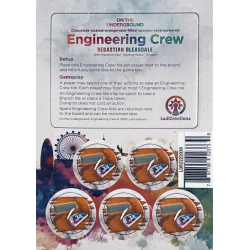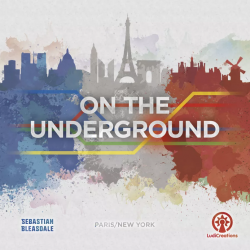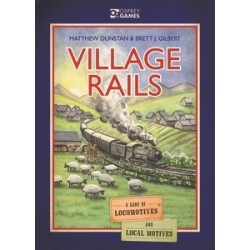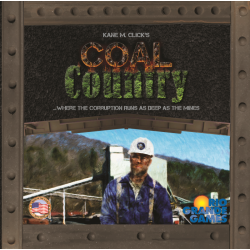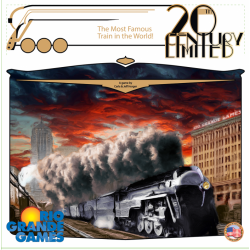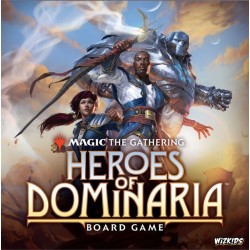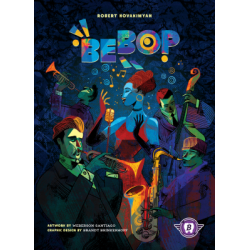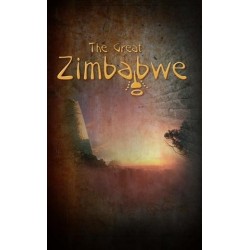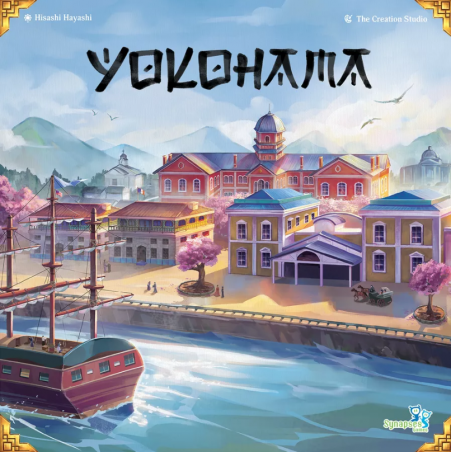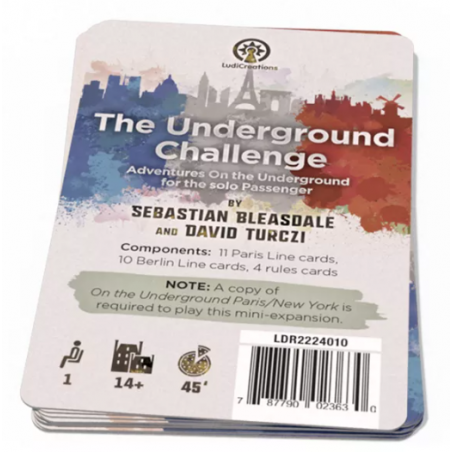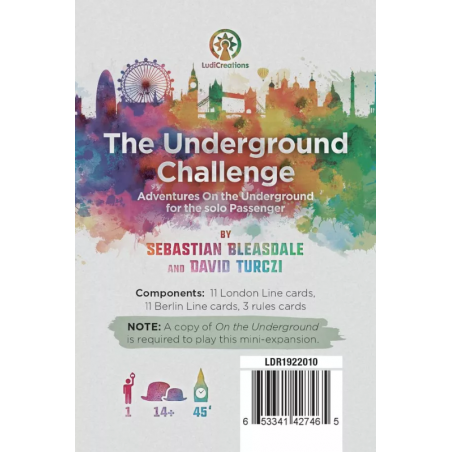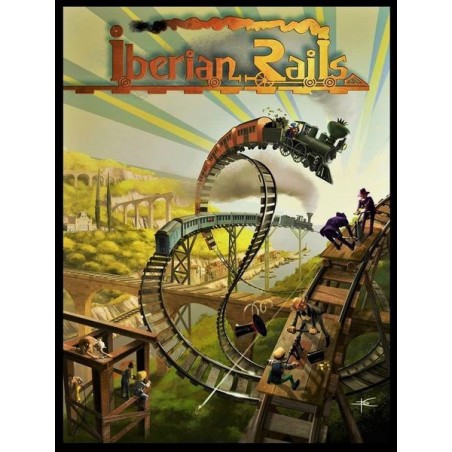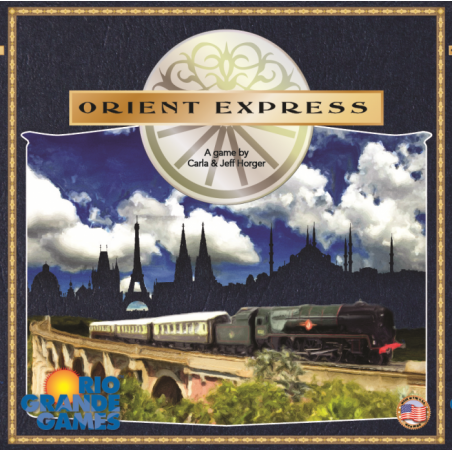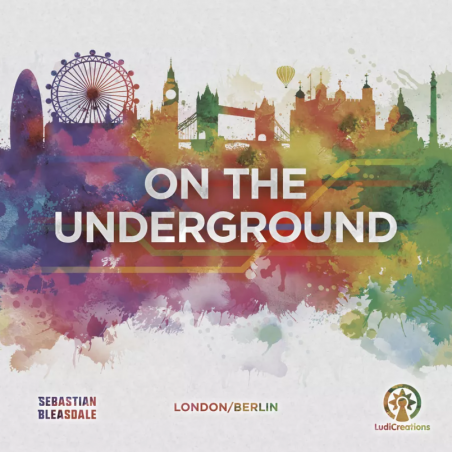No products in the cart.
Active filters
Yokohama
Once Yokohama was just a fishing village, but now at the beginning of the Meiji era it\'s becoming a harbor open to foreign countries and one of the leading trade cities of Japan. As a result, many Japanese products such as copper and raw silk are collected in Yokohama for export to other countries. At the same time, the city is starting to incorporate foreign technology and culture, with even the streets becoming more modernized. In the shadow of this development was the presence of many Yokohama merchants.
Terminus
You and your competitors’ transit companies have been hired by the city to build new subway lines and commercial developments to improve the city\'s bottom line.
Cascadero
The kingdom is shattered, its towns are divided, and its people are distrusting. The newly crowned ruler, El Cascadero, seeks to reunite the land, but he can’t do it alone. Thus, he appoints four ministers to visit the people and restore civil harmony. While the ministers are obligated to bring prosperity to the entire land, each of them also has one dedicated responsibility: Farming, Crafting, Mining, and Markets. El Cascadero also records in his book the successes of his ministers…
The Underground Challenge: Paris / New York
In The Underground Challenge, you will compete against real Underground lines. The map starts with multiple lines already built, and you must try to beat the Underground\'s score.
On The Underground: Obstruction
Setup: Before setting up the game, randomly draw three destination cards and place an obstruction tile in each of the stations they show. Shuffle those cards back into the deck.
Gameplay: A player must pay 2 branch tiles to connect a line to a station with an obstruction tile. That player then scores three points and removes the obstruction tile from the game.
On The Underground: Engineering Crew
Setup: Place on engineering crew tile per player next to the board and return the extras to the box.
Gameplay: A player may spend one of their actions to take an engineering crew tile. Each player may hold at most 1 of these tiles. It may be spend to take a branch tile or place a track token. Doing so does not cost an action.
On The Underground: Street Fair
Setup: Before setting up the game, randomly draw 3 Destination cards, and place a Street Fair tile in each of the stations they show. Shuffle those cards back in the deck.
Gameplay: When placing Track tokens, a player scores 2 points whenever they connect a station with a Street Fair tile with the Passenger start station using the same line.
The Underground Challenge: London / Berlin
In The Underground Challenge, you will compete against real Underground lines. The map starts with multiple lines already built, and you must try to beat the Underground\'s score.
On the Underground: Paris / New York
In On the Underground: Paris/New York, players build the Paris Métro lines or the New York City Subway lines. Each player controls 2-4 different lines, depending on the number of players.
Village Rails
In the sleepy English countryside, life continues undisturbed as it has for centuries. It is up to you to travel to every corner of this land, bearing the promise of modernisation, accommodating the oddly specific demands of the locals, and ushering in the age of steam.
Iberian Rails
Iberian Rails
Iberian Rails is a share-holding train game in which players employ services of characters, some more reputable than others.
Each round, the players select their characters using an original character-row mechanism, then the railway companies take their turns. The player with the most share/s in a railway company (the CEO) controls said company, directing the company to do one of the following on its turn: build track/s; openly sell a share, and then trigger its dividend payout; and secretly sell a share, and then trigger its dividend payout.
Coal Country
Coal Country is rife with corruption. Many mine foremen “influence” various aspects of the mining industry. It is your job as the boss to determine where to send your most influential foremen. Your job as boss is made more difficulty by the ever-shifting nature of the markets.
Orient Express
Orient Express is a railroad game for 2-5 players. It is similar to its sister game (20th Century Limited) but this game is set in Europe.
You have decided to be a part of the growing European railroad boom. All over the continent rails are needed to connect disparate regions for business and recreation.
20th Century Limited
20th Century Limited is a railroad game for 2-5 players.
You will become part of a U.S. National Institution of the early 20th Century by building the routes and reputation of The Most Famous Train in the World: the 20th Century Limited.
Magic: The Gathering – Heroes of Dominaria Board Game
In Magic: The Gathering – Heroes of Dominaria Board Game, players take on the role of a powerful hero as they travel to the lands of Dominaria. As the player explores the ancient lands, they need to build sites, rediscover lost artifacts, and confront the sinister Cabal in order to gain the resources needed to save the multiverse before rival heroes do.
Bebop
The jazz festival is underway! All the bands are set up on their stages and ready to perform. The endless line of fans cannot wait to get in. As a booking agent, it is your job to secure the best seat for your customers by ensuring they are listening to bands that feature their favorite instruments — and it wouldn\'t hurt if you seat them next to friends and family!
On the Underground: London / Berlin
The London Underground is the world\'s first underground passenger railway, having opened in 1863. Its 11 lines move about 5 million passengers a day to 270 stations, along 400 km (250 mi) of track.
The massive network of London Underground stations makes up one of the most complex transportation systems in the world, and On the Underground challenges you to develop it. Build the most successful lines, connect them to landmarks, and attract passenger traffic!
The Great Zimbabwe
The Great Zimbabwe is a game about building a trade based civilization in ancient Africa. It has been inspired by the old kingdoms surrounding the Great Zimbabwe, a world heritage site in Southern Africa. Far into the previous century, colonial governments denied that a civilization that produced such impressive monuments and beautiful artwork could have been African in origin. But of course, this civilization was African, and the country of Zimbabwe itself was proudly named after this impressive cultural heritage.






